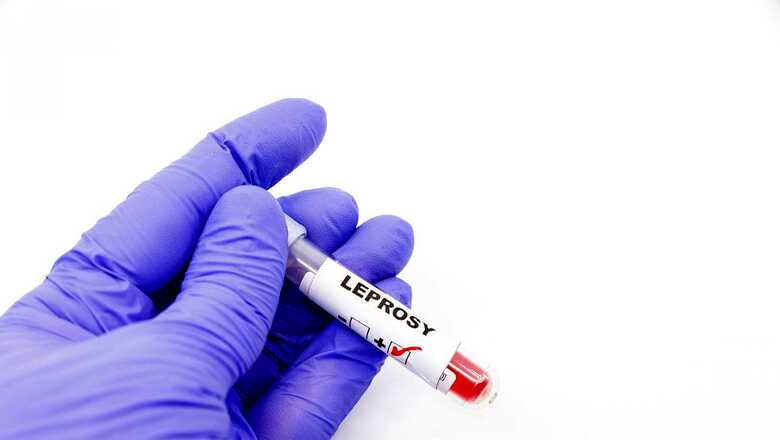
views
Leprosy, a disease caused by the bacterium Mycobacterium leprae, was discovered in 1873. It progresses slowly and symptoms may take years to appear. While it is curable, lack of awareness and stigma surrounding the disease often prevent sufferers from seeking treatment. Additionally, inadequate access to basic medical care exacerbates the problem. According to the World Health Organization, 200,000 cases of leprosy were reported globally in 2019.
The World Leprosy Day is observed annually on the last Sunday of January and the theme for 2023 is Act Now. End Leprosy. The purpose of this day is to raise awareness and dispel myths surrounding the disease, which is preventable and treatable. The goal is to convey the message that leprosy transmission can be stopped. Despite being a disease that has been known for at least 4,000 years, many misconceptions still exist about it.
Dr Rohit Batra, Dermatologist and Dermatosurgeon, Sir Ganga Ram Hospital and President, IADVL New Delhi, says, “Since, the disease is surrounded by stigma and society tends to discriminate against those infected. The patients’ and their family members’ emotional health also suffers as a result. It leads the person to live with low self-esteem, sadness, low quality of life which brings a lot of mental distress to the patients.”
Therefore, it is very important to understand about Leprosy and spread awareness so that people living with it can come forward for treatment and live a normal life.
Dr Sumit Gupta, Hon. Secretary, Indian Association of Dermatologists, Venereologists and Leprologists (IADVL), Delhi, explains, “The only way to completely eradicate the disease is to identify, detect, and treat every single case. Early intervention not only averts leprosy-related problems, but also stops the disease’s transmission because after 72 hours of Multi-Drug Therapy treatment (MDT), patients are no longer contagious. It has been proven that leprosy can be effectively stopped by early diagnosis and treatment.”
Dr Batra and Dr Gupta reveal few myths surrounding Leprosy and the facts one needs to be aware of:
Myth 1: Leprosy has been eradicated
Fact: The disease continues to affect the world’s population. The misconception about its non-existence has prevented the people who suffer from it from coming forward and getting it treated.
Also Read: What Is Driving Pet Tourism In India? Experts Answer
Myth 2: Leprosy cannot be cured
Fact: Leprosy is curable. Multidrug therapy is used to treat the disease. Strong antibiotics can potentially kill the bacteria and prevent the occurrence of the symptoms associated with it.
Myth 3: Leprosy is an old people’s disease
Fact: Leprosy is an age unrelated disease. Due to the bacteria’s longer incubation period, the visibility of signs and symptoms is delayed. Thus, it is perceived as the disease is for older people, but it is not true. Even, children and adults suffer from the disease.
Myth 4: Leprosy is highly contagious.
Fact: The communicability of the disease is tough. More than 90% of adults have an immune system that could prevent them from contracting the disease. Also, after receiving MDT for 72 hours, the disease is no longer contagious at all.
Myth 5: Leprosy-infected people should be kept in isolation.
Fact: Seclusion is not needed. One can live a normal life with their family; all they need is proper treatment.
Myth 6: Leprosy causes the fingers and toes to chip off.
Fact: It is not so. The bacteria infect the nerves of the fingers and toes, causing them to become numb. The sensation of pain is lost, and tissue loss and infections occur. When healing of wounds fails and repeated injuries in the numb area lead to tissue loss, which can also lead to amputation. But, with treatment in time, this will not occur.
Myth 7: Leprosy is a disease sent by god
Fact: It is a bacterial disease caused by Mycobacterium leprae, characterized by muscle weakness, skin lesions, and numbness in the upper and lower extremities.
Myth 8: Leprosy only affects the poor
Fact: It only affects people with a weakened immune system. The disease spreads in poorer areas due to malnutrition and poor sanitation but it depends on a person’s immune system.
Getting the right treatment, breaking the stigmatization surrounding it and stopping the discrimination against those infected with leprosy will help the people who are suffering from it to come forward and get treated instead of hiding their symptoms.
Read all the Latest Lifestyle News here




















Comments
0 comment